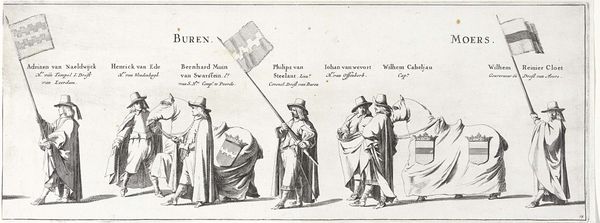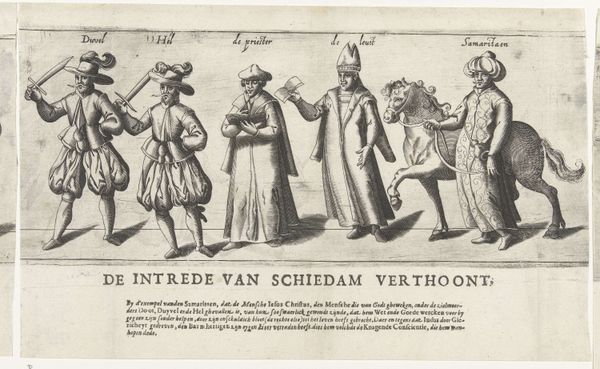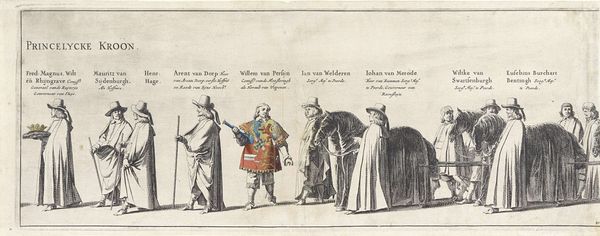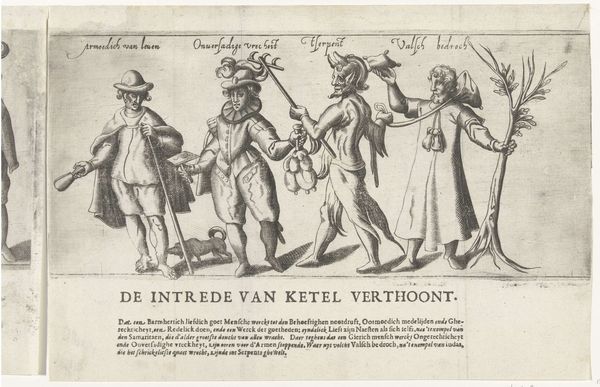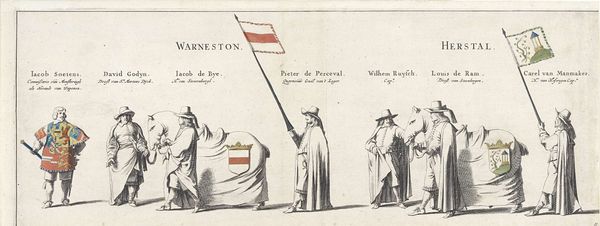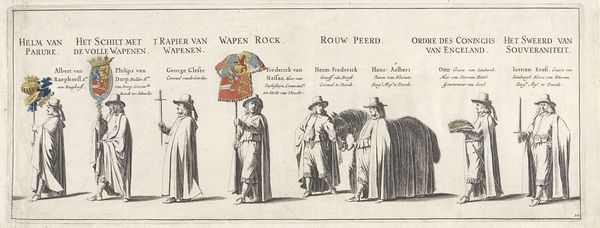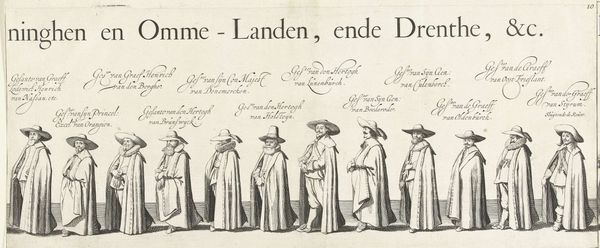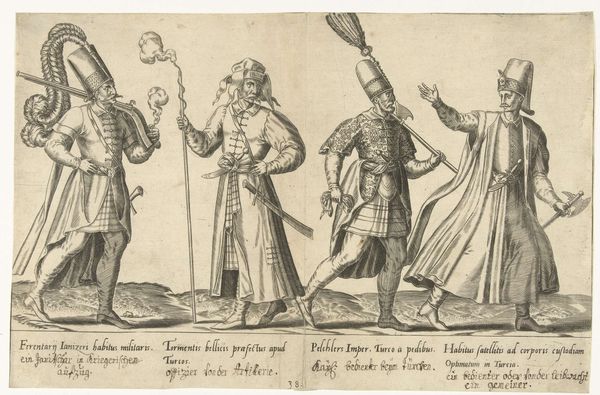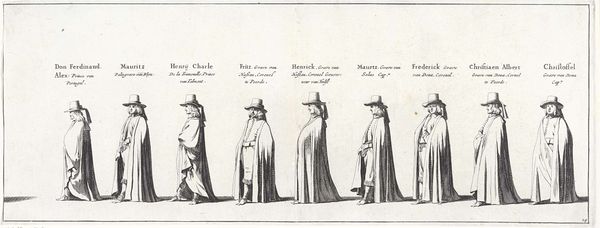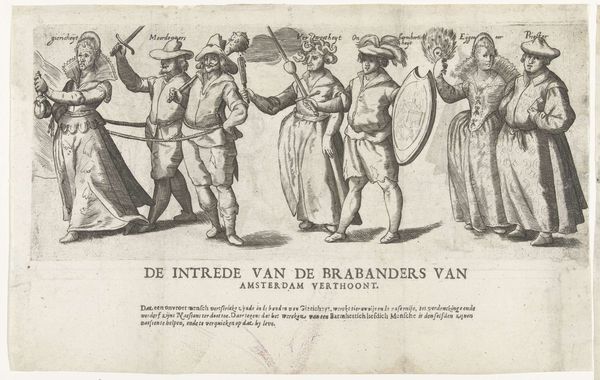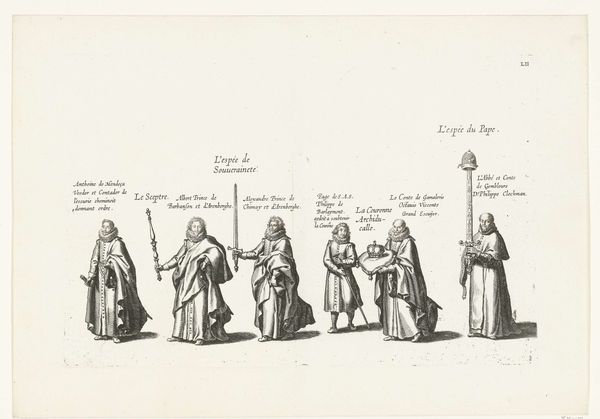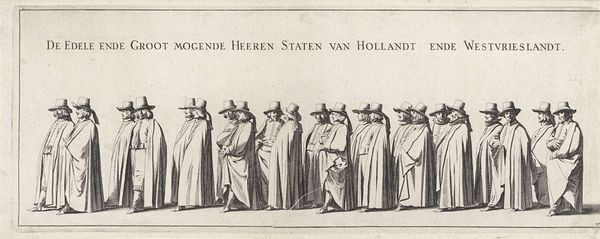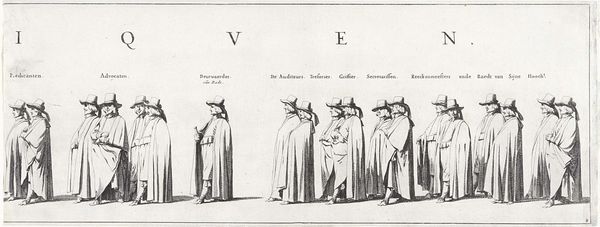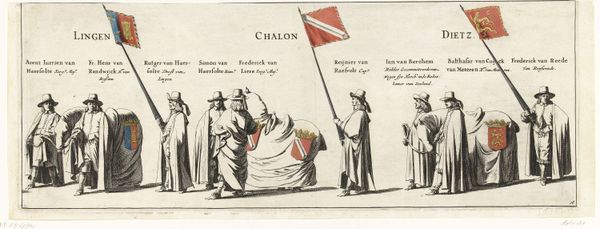
print, engraving
#
portrait
#
narrative-art
#
dutch-golden-age
# print
#
history-painting
#
engraving
Dimensions: height 207 mm, width 548 mm
Copyright: Rijks Museum: Open Domain
Curator: This engraving, Pieter Nolpe’s "The Funeral Procession of Frederik Hendrik," created in 1651, shows a segment of the elaborate procession. What strikes you first? Editor: The procession appears quite regimented and dignified, and the repeating figures and flags have a somewhat ceremonial air, wouldn't you say? How should one approach such a work, knowing that it depicts not just a historical moment, but a carefully constructed public display? Curator: Exactly! Consider that Nolpe isn't merely documenting; he's constructing a narrative, perpetuating an image. Note the banners, each carried with purpose. Think of flags less as identifiers, and more as vessels of cultural memory. The ‘Orange’ banner, for example, embodies the aspirations and the very identity of the House of Orange. Do you see how the symbolic weight carried here might shape public perception? Editor: I do, the banners would have told their own story even without words. So, understanding these symbols would be critical to deciphering the complete picture? Curator: Precisely. Also consider the horse draped in heraldry - a symbol of power and lineage. What does its presence contribute, removed from actual battle? What’s its psychological effect on onlookers? Editor: I see it emphasizes the enduring power and legacy of Frederik Hendrik beyond just his military prowess. The visual language really drills the narrative in, doesn't it? I’ve never considered how powerfully images work to solidify ideas and beliefs over time. Curator: The beauty of art is precisely in that power – its enduring capacity to carry coded cultural information forward, beyond language. Editor: It’s fascinating how much more there is to this image than just a record of a funeral.
Comments
No comments
Be the first to comment and join the conversation on the ultimate creative platform.
